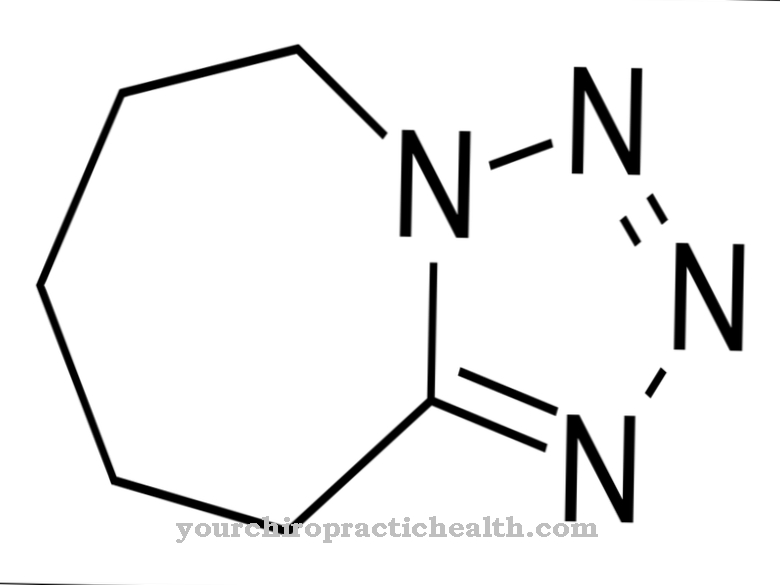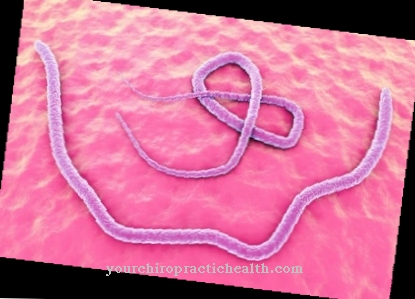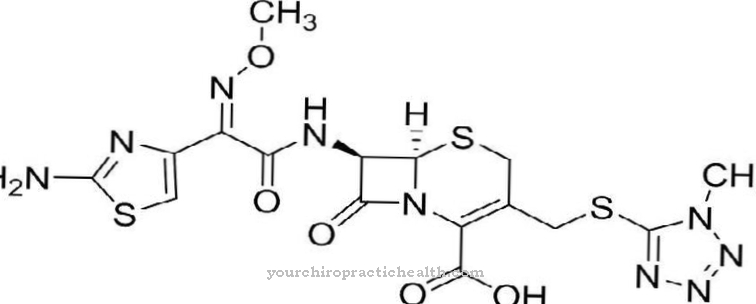Moclobemide is an antidepressant from the group of MAO inhibitors (monoamine oxidase inhibitors). It is used in the treatment of depressive illnesses (phases of major depression). Moclobemide is also used for anxiety disorders and psychoses.
What is moclobemide?
Moclobemide is a so-called monoamine oxidase (MAO) inhibitor. It is one of the antidepressants and is primarily prescribed for depressive illnesses, anxiety disorders and psychoses.
It is an activating, mood-enhancing and invigorating antidepressant that is available in the form of film-coated tablets. These must be taken two to three times a day after meals.
Pharmacological effect on the body and organs
Depression usually manifests itself as a negative mood and lack of drive. It is believed that a lack of monoamines (e.g. serotonin, noradrenaline) in the synaptic cleft is due to a decreased production of neurotransmitters. In addition, a changed expressivity at their receptors or the binding to them can lead to a deficiency symptom.
The aim of therapy with antidepressants is to increase the amount of monoamines. An increase in the concentration is only possible by inhibiting monoamine oxidase A (enzyme of the outer mitochondrial membrane at the nerve endings of the synaptic nervous system). This has the task of breaking down monoamines.
Monoamine oxidase is inhibited by moclobemide. Since the active ingredient only inhibits monoamine oxidase A, but not monoamine oxidase B, there are fewer side effects and interactions with other drugs.
Medical application & use for treatment & prevention
Moclobemide is used for severe depression (so-called major depressions), for anxiety disorders and psychoses. Since it increases drive, it is also used in so-called "inhibited" depression. They are characterized by a particularly strongly inhibited drive, listlessness and agonizing inner restlessness. It is also used when other antidepressants are ineffective or ineffective.
The first improvements can already be noticeable after one week of treatment, but the dose should not be increased in the first week of therapy. The treatment usually lasts between 4 and 6 weeks, this is the only way to assess the effect of moclobemide.
It should then be taken in a symptom-free period for 4 to 6 months. The treatment is then stopped by gradually lowering the dose.
You can find your medication here
➔ Medicines to calm down and strengthen nervesRisks & side effects
Even if moclobemide - compared to other antidepressants - has fewer side effects and interactions, these cannot be ruled out. Typical side effects of moclobemide include insomnia, headache, dry mouth, nausea and vomiting, diarrhea or constipation, dizziness (due to low blood pressure), irritability, anxiety, nervousness, discomfort (e.g. tingling), rash, skin reactions (e.g. reddening of the skin, itching), edema, confusion, visual disturbances, taste disturbances, decreased appetite, suicidal thoughts and behavior, delusions or galactorrhea (secretion from the breast).
The side effects don't have to happen to everyone. They can usually be seen in the first few weeks of treatment and regress as the therapy progresses. After the end of treatment, withdrawal symptoms can also occur as a side effect, which is why the medication is always withdrawn gradually.
When taking several drugs at the same time, there may be interactions. Both the effect and side effects can change as a result. The factors for the creation of interactions are very different.
With moclobemide, interactions can also occur when taking tyramine-containing foods (e.g. cheese, white beans, red wine). However, these are so minor that no special diet is necessary. Excessive consumption of such foods should only be avoided.
If opioid painkillers (e.g. tramadol, pethidine) are taken at the same time, their effect is increased by moclobemide, which is why the drugs must not be used at the same time. Simultaneous use of other antidepressants is also not allowed, as this can lead to life-threatening serotonin syndrome.
Migraine drugs (e.g. triptans) and the anti-anxiety agent buspirone can cause a dangerous rise in blood pressure if taken at the same time and must also not be taken together with moclobemide.
When taking alpha-sympathomimetics at the same time, the effect of moclobemide is increased, as is the use of the gastric acid-inhibiting agent cimetidine. In the latter case, a reduction in the moclobemide dose is sufficient; regular medical monitoring is required when taking alpha-sympathomimetics (e.g. ephedrine).
Moclobemide must not be used in certain circumstances. This is not only the case with the simultaneous use of certain drugs, but also with hypersensitivity to the active ingredient, with acute states of confusion, with an overactive thyroid, and with a tumor of the adrenal cortex. Children under the age of 18 should also not be treated with moclobemide.
























.jpg)



